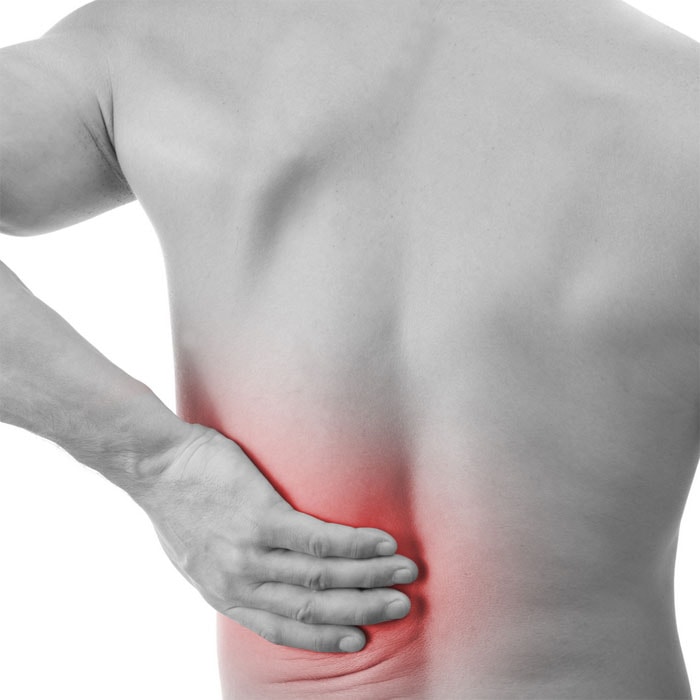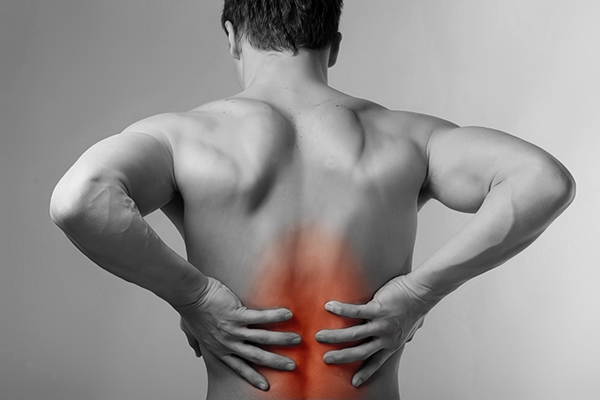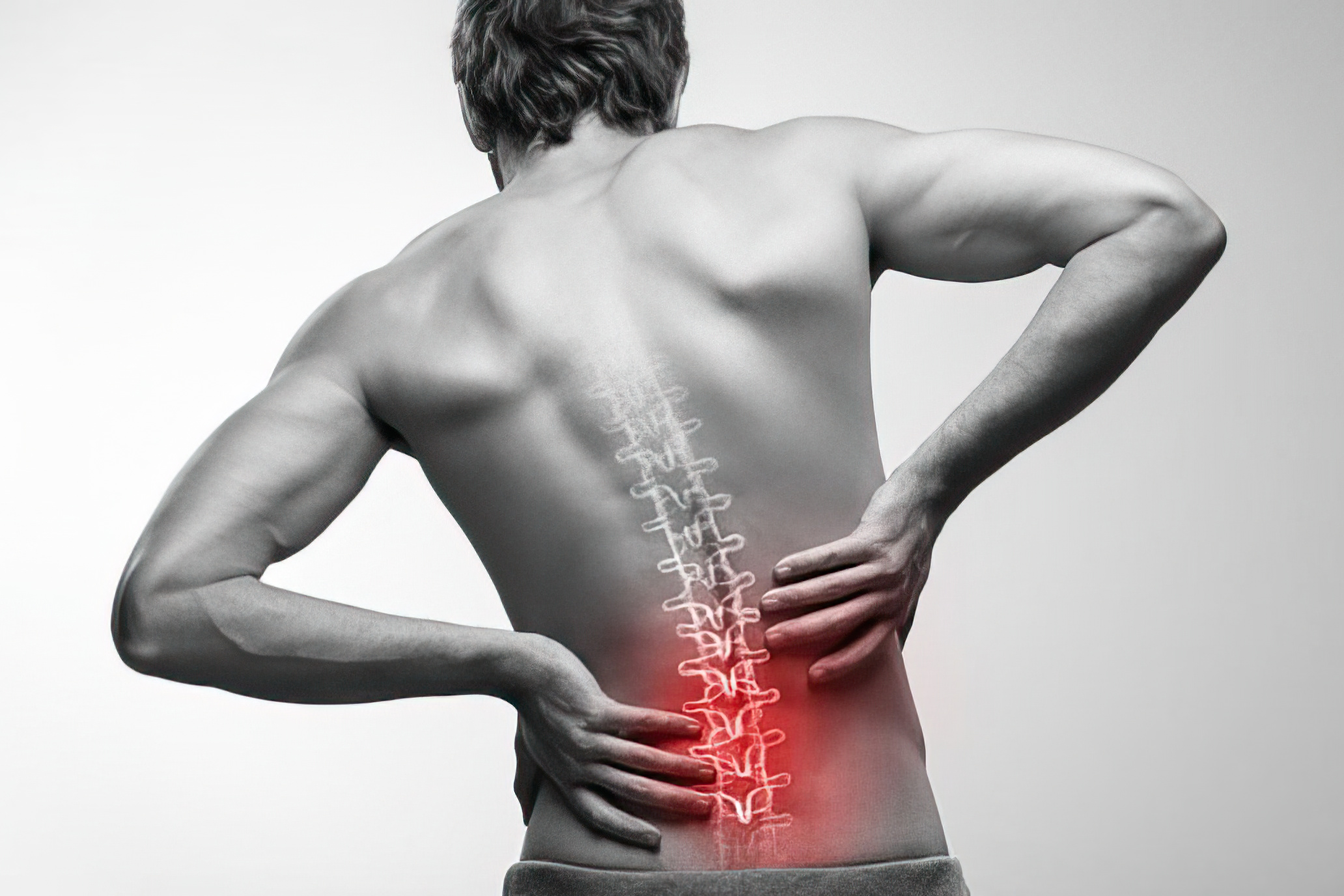MID BACK PAIN

The fast-paced lifestyles of today have taken their toll on the backs of America. Currently, back pain is the number one cause of disability in those aged 19-45 and is the second leading cause of missed work days. Total annual costs for back pain in the US alone are estimated to be in excess of $60 billion.
Our treatments primarily focus on the cause of your problems, which not only results in rapid and effective pain-relief but most importantly, minimizes the chance of future back problems.


ANATOMY OF LOWER BACK
Thoracic Vertebrae
The thoracic spine contains 12 medium-sized vertebrae all of which form articulations (joints) with 2 opposing ribs. Like the other spinal vertebrae, the thoracic vertebrae act as attachments for muscles and ligaments in the mid-spine and also encase and protect the median aspect of the spinal cord and thoracic nerve roots.
Because the thoracic vertebrae form relatively strong articulations with the ribs, the mobility of the thoracic spine is less than that of the cervical and lumbar spines. However, this same characteristic also protects the thoracic spinal discs and facet joints from the wear and tear experienced by these structures in the other areas of the spine.
Common vertebral problems in the thoracic spine include vertebral subluxations, a condition where the vertebrae of the thoracic spine become statically misaligned and/or function abnormally resulting in pain, muscle spasms, and sometimes nerve malfunction.
Rib Articulation
The thoracic is unique in that each of its vertebrae attaches to a pair of ribs. There are 12 thoracic vertebrae and thus, 24 ribs (12 on the left and 12 on the right). Just like adjacent connecting vertebrae can misalign and biomechanically malfunction, so too can the thoracic vertebrae and its adjacent ribs. When ribs “go out” or misalign in relation to their connecting vertebrae, the individual will often experience sharp pains in the area of the misaligned rib head, especially on twisting movements of the torso.
As with vertebral subluxations, chiropractors can successfully treat rib misalignments with chiropractic spinal adjustment. The adjustment repositions the rib to its correct position and normalizes impaired motion patterns.
Thoracic Intervertebral Discs
The intervertebral discs in the thoracic spine are located between adjacent vertebrae. They function as spacers to provide clearance for exiting spinal nerves, as connectors to link adjacent vertebrae together and allow for movement, and also as spinal shock absorbers.
The discs of the thoracic spine are less likely to become injured compared to those of the cervical and lumbar spines, making up only 2% of intervertebral disc herniations. This is because of the rib articulations made by the vertebrae which significantly increase the stability of the thoracic spine. This does not mean that the discs of the thoracic are immune from damage, rather, statistically less likely to become injured.
Thoracic Facet Joints
The facet joints in the thoracic spine allow for considerable amounts of flexion and extension. The facet joints can become injured with excessive amounts of rotation and extension. Golfers are prime candidates for facet joint injury due to their repetitive twisting motions as they swing their golf clubs. When injured, pain is often sharp and localized to the area of the affected facet joint.
Thoracic Spinal Nerves
The thoracic spinal nerve roots exit openings formed between adjacent thoracic vertebrae termed the intervertebral foramina or IVF. The spinal nerves from the thoracic spine innervate the many muscles of the back as well as the many visceral organs and tissues of the chest and abdominal regions.
Spinal nerve root irritation or compression in the thoracic region commonly leads to intercostal pain (between the ribs). Sharp shooting pains are often experienced along the path of the ribs. Additionally, increased susceptibility to herpes zoster or “shingles” in some individuals (generally the elderly or immunocompromised) is thought to occur when the thoracic spinal nerves are irritated or compressed. Herpes zoster involves infection to an area of the nerve root, the dorsal root ganglion, with the herpes virus.
Thoracic Spinal Musculature
The paraspinal muscles of the thoracic spine are numerous. They are responsible for the majority of trunkal movements as well as a number of upper extremity movements and are a common source of injury and pain.
Overexertion of the muscles from lifting and pulling and poor posture are the major contributors to mid-back strains. Pain originating from these muscles characteristically produces a dull generalized ache.

MID-BACK PAIN TREATMENTS
Doctors of chiropractic are the healthcare leaders in the treatment of mid-back pain as well as other spinal conditions. Treatments are gentle, safe, natural, noninvasive, and highly effective. Also, the treatments are designed to correct the root cause of your problem and not simply cover up the symptoms you experience.
Identifying The Cause
The first step in treating mid-back pain is to determine what has and is causing the mid-back pain. Once the causes and contributing factors are identified, a successful treatment plan can be structured to eliminate the pain and achieve the goals of the patient.
Most individuals experiencing mid-back pain have a combination of:
- Vertebral subluxations
- Faulty spinal biomechanics
- Deconditioned and weak spinal musculature
- Improper firing patterns of spinal musculature
- Poor postural habits
- Poor diet and nutritional practices
- History of activities (work or play) generating high levels of spinal stress
The Treatment
Chiropractic doctors have successfully treated mid-back pain for over 100 years. Through the use of natural and safe procedures, chiropractors correct the underlying problems which cause and contribute to the majority of mid-back pain cases.
The main treatment employed by the chiropractor is chiropractic spinal adjustment. This noninvasive therapy consists of a gentle, manual, or mechanically applied force into the segments of the spinal column. Spinal adjustments have been shown to decrease pain, increase the spinal range of motion, decrease muscle spasms, reduce inflammation, optimize spinal biomechanics, and reduce the recurrence of old injuries.
Proper Habits and Techniques
Another key ingredient to a successful mid-back pain treatment plan includes the learning of proper postural habits and other techniques. Proper posture is a significant factor in the health of the back and proper posture should always be practiced. Techniques common to daily living and work also play a major role in the development or lack of development of mid-back pain. This includes proper lifting techniques, avoidance of repetitive motions, avoidance of prolonged sitting, and much more. We can teach you correct habits and techniques which will protect your back from discomfort and injury.
Other Therapies
Other manual therapies such as massage, trigger point therapy, proprioceptive neuromuscular facilitation, and acupressure therapy may be utilized to assist in the relaxation of paraspinal muscles and increase spinal mobility.
Back exercises are commonly prescribed to patients suffering from mid-back pain. These exercises are designed to strengthen the muscles of the mid back so that they are less likely to fatigue during the day. When the muscles of the mid back are weak and fatigued easily the risk for injury is increased and the ability to maintain proper posture throughout the day is reduced. Stretches are commonly provided to stretch the muscles of the chest as tightness in these muscles can place increased stress on the muscles of the mid back. Exercises and stretches are unique in that they can be performed outside the office without the assistance of the doctor.
Physical therapies may also be employed and include hot and cold applications, muscle stimulation, interferential therapy, therapeutic ultrasound, and diathermy.
Diet and nutrition also play a key role in the health of the spine. Without the proper nutrients, the thoracic spine and the rest of the body are less able to remain healthy and heal once injured. If your diet and nutritional status are poor, we can help get you on track.
How To Maintain a Healthy Mid Back
Regular spinal checkups. Maintaining proper alignment and functioning of the back through periodic spinal adjustments minimizes the stresses on the structures of the back. Also, keeping the nervous system free from interference ensures proper communication between the various structures of the back.
Proper posture, lifting, and ergonomics. Practicing proper lifting techniques and ergonomics are key in preventing back injury at work and preventing future recurrences of old injuries. Maintaining proper posture keeps the spine in a minimal-stress environment and prevents the abnormal stretching of the supportive spinal structures.
Regular exercise. Routine physical activity keeps the heart healthy and keeps the spine and the rest of the body strong, limber, and healthy. A minimum of 3 times per week for 40 minutes should be your goal. Involve friends and family, mix up the activities, keep it fun and stay consistent!
Proper diet and nutrition. Providing your body with the proper fuel increases performance, reduces the likelihood of injury and sickness, speeds recovery after injury, and keeps you feeling good. If like the rest of us, you’re finding it difficult to get all the nutrients your body needs, it’s probably time to supplement.
If you’re suffering from mid-back pain, join the millions of other individuals who have benefited from gentle, safe, and natural chiropractic care. Our treatments provide fast, effective relief which not only eliminates pain but can help increase the performance and health of the entire body.
CAUSES OF MID-BACK PAIN
Mid-back pain is most commonly caused by irritation or injury to the muscles and ligaments of the thoracic spine. The high incidence of poor postural habits, lack of adequate exercise and muscle conditioning, as well as the ever more popular “seated” lifestyles of Americans, are all major contributors.
Chiropractors work hard to identify the exact problems of mid-back pain so that only the safest and most effective treatments can be provided. Since the majority of mid-back pain cases are caused by soft tissue problems or have a significant soft tissue component, hands-on chiropractic treatments are extremely beneficial and have been shown to be superior to other forms of “back” care.
Common events leading or contributing to the development of mid-back pain include:
- Incomplete rehabilitation of past injuries
- Lack of proper and periodic thoracic spinal alignments
- Presence of thoracic spine subluxations
- Improper lifting techniques
- Auto accidents
- Improper workstation setup
- Poor posture
- Prolonged sitting
- Prolonged use of non-ergonomically designed equipment
- Excessive repetitive torsal motions
- Scoliosis (lateral deviation of the spine)
- Physical inactivity
- Poor diet and nutritional practices
- Smoking
Structures that are often the source of lower back pain include:
- Thoracic facet joints and capsules
- Thoracic paraspinal muscles and ligaments
- Costovertebral joints (joints between the thoracic vertebrae and ribs)
- Thoracic intervertebral discs
- Thoracic spinal nerves

